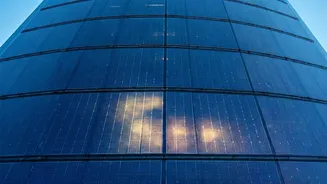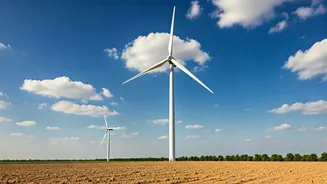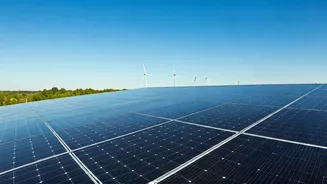Energy-Generating Windows
The concept of semi-transparent solar cells represents a significant leap towards sustainable energy. Unlike conventional solar panels, these cells are designed
to be partially see-through, allowing them to be integrated into building materials like windows and facades. This innovative design allows for the generation of electricity without compromising the aesthetics or natural light of buildings. The technology works by using specialized materials that absorb sunlight and convert it into electricity, while simultaneously allowing some light to pass through. This unique capability opens up a wide range of applications, especially in urban environments where rooftop space is limited. The advancement in this area holds immense potential for reducing our reliance on fossil fuels and promoting a cleaner, greener future. The current progress showcases that these innovations are making the concept of energy-generating windows a realistic prospect for the near future.
Breaking Records, Promise
Recent developments in semi-transparent solar cell technology have been nothing short of impressive, with researchers achieving record-breaking efficiencies. These advancements have propelled the technology closer to commercial viability. The improved performance is attributed to the use of novel materials and manufacturing techniques that optimize light absorption and energy conversion. Scientists have been experimenting with different compounds and structures to increase the efficiency of these cells while maintaining their transparency. This ongoing research aims to make the technology not only more effective but also cost-competitive with existing energy sources. These latest breakthroughs suggest that semi-transparent solar cells could soon become a practical and widespread solution for generating clean energy in various settings.
Applications, Impact
The potential applications of semi-transparent solar cells extend far beyond conventional windows. They could be integrated into building facades, skylights, and even vehicle windshields, creating an expansive network of energy-generating surfaces. The environmental impact of widespread adoption is substantial, offering a significant reduction in carbon emissions and a decrease in reliance on traditional power plants. By harnessing the power of the sun through everyday structures, this technology contributes to a more sustainable and decentralized energy system. The shift towards this approach could also reduce our collective dependence on finite resources. The long-term impact promises a healthier planet through cleaner energy production and reduced pollution, further driving the need for this innovative solution.
Future of Energy
The advancements in semi-transparent solar cells represent a major shift in how we approach energy production. The potential to turn everyday objects into power generators is revolutionary, pointing towards a future where buildings and infrastructure actively contribute to the energy supply. This technology fosters a more sustainable and resilient energy infrastructure. The ongoing research and development in this area signal a continued trend towards more efficient, cost-effective, and environmentally friendly energy solutions. As the technology matures and becomes more widespread, we can anticipate a world where clean energy is integrated into nearly every aspect of our lives. This signifies a turning point in our efforts to combat climate change and build a more sustainable future for generations to come.












